
Boa is a genus of boas found in Mexico, the Caribbean, and Central and South America. Five extant species, and one extinct, are currently recognized.

Loxocemus bicolor, the sole member of the monotypic family Loxocemidae and commonly known as the Mexican python, Mexican burrowing python and Mexican burrowing snake, is a species of python-like snake found in Mexico and Central America. No subspecies are currently recognized. Analyses of DNA show that Loxocemus is most closely related to the true pythons and the sunbeam snakes.
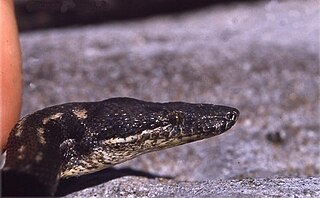
The Bolyeriidae are a family of snakes native to Mauritius and a few islands around it, especially Round Island. They also used to be found on the island of Mauritius, but were extirpated there due to human influence and foraging pigs in particular. These snakes used to be placed in the Boidae, but are now classed as a separate family. Two monotypic genera are recognized, but only a single species is extant. Bolyeriidae appear to be most closely related to the Asian genus Xenophidion.

Xenopeltis, the sunbeam snakes, are the sole genus of the monotypic family Xenopeltidae, the species of which are found in Southeast Asia. Sunbeam snakes are known for their highly iridescent scales. Three species are recognized, each one with no subspecies. Studies of DNA suggest that the xenopeltids are most closely related to the Mexican burrowing python and to the true pythons (Pythonidae).

The Jamaican boa, Jamaican yellow boa or yellow snake is a boa species endemic to Jamaica. No subspecies are recognized. Like all other boas, it is not venomous.
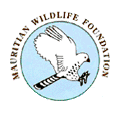
The Mauritian Wildlife Foundation (MWF) is an independent, non-governmental, non-profit conservation agency working in Mauritius and the Outer Islands to save threatened endemic local flora and fauna.
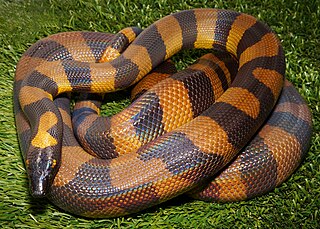
The Bismarck ringed python is a species of snake in the genus Bothrochilus found on the islands of the Bismarck Archipelago. No subspecies are recognized.

Eryx conicus, also known as Russell's sand boa, the Common sand boa or the rough-tailed sand boa, is a species of non-venomous snake in the subfamily Erycinae of the family Boidae. The species is native to Southern Asia. No subspecies are recognised.

Candoia is a genus of non-venomous boas found mostly in New Guinea, Melanesia and the Maluku Islands in Indonesia. Common names include bevel-nosed boas and keel-scaled boas.

Round Island is an uninhabited islet 22.5 kilometres north of Mauritius. It has an area of 1.69 square kilometres and a maximum elevation of 280 metres. The island has been a nature reserve since 1957 and is administered jointly by the National Parks and Conservation Service and the Mauritian Wildlife Foundation. The island has been designated an Important Bird Area (IBA) by BirdLife International.

Sanzinia madagascariensis, also known as the Madagascar tree boa or Malagasy tree boa, is a boa species endemic to the island of Madagascar. It was once considered conspecific with the Nosy Komba ground boa. Like all other boas, it is non-venomous.
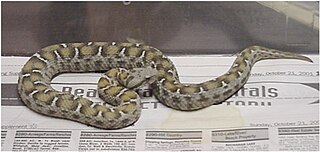
Montivipera albizona, the central Turkish mountain viper, is a viper species endemic to the mountainous regions of central Turkey. Like all other vipers, it is venomous. No subspecies are currently recognized.
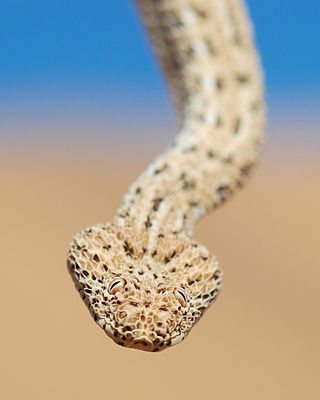
Bitis peringueyi, also known as the Peringuey's adder, Peringuey's desert adder or desert sidewinding adder, is a venomous viper species found in Namibia and southern Angola. No subspecies are currently recognized.

Wagner's viper, known as the ocellate mountain viper, ocellated mountain viper, and Wagner's viper, is a species of venomous snake in the subfamily Viperinae of the family Viperidae. The species is native to eastern Turkey and northwestern Iran. There are no subspecies that are recognized as being valid.

The Round Island burrowing boa is an extinct species of snake, in the monotypic genus Bolyeria, in the family Bolyeriidae. The species, which was endemic to Mauritius, was last seen on Round Island in 1975. There are no recognized subspecies.

Corallus cookii, also known as Cook's tree boa or Cooke's tree boa, is a species of nonvenomous snake in the family Boidae. The species is endemic to the island of St. Vincent in the Caribbean. There are no recognized subspecies.

The Cuban boa, also known as the Cuban tree boa and by locals as majá de Santa María, is a very large species of snake in the family Boidae. With lengths exceeding 5 m (16 ft) and a relatively heavy build, the Cuban boa is one of the largest snakes in the world. The species is native to Cuba and some nearby islands. No subspecies are currently recognized.

Boa imperator is a large and heavy-bodied arboreal species of non-venomous, constrictor-type snake in the family Boidae. One of the most popular pet snakes in the world, B. imperator's native range is from Mexico through Central and South America, with local populations on several small Caribbean islands. It is commonly called the Central American boa, northern boa, Colombian boa, common boa and common northern boa.

Chilabothrus, commonly known as the Greater Antillean boas or West Indian boas, is a genus of nonvenomous snakes the family Boidae. The genus is endemic to the West Indies. 12 or 14 species are recognized as being valid.
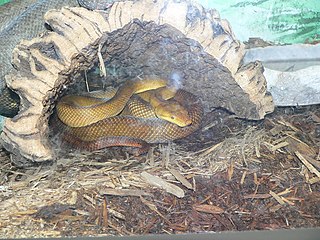
Candoia bibroni, commonly known as Bibron's bevel-nosed boa, Bibron's keel-scaled boa, the Pacific tree boa, or the Fiji boa, is a boa species endemic to Melanesia and Polynesia. Two subspecies are recognized, including the nominate subspecies described here. Like all other boas, it is not venomous.




















